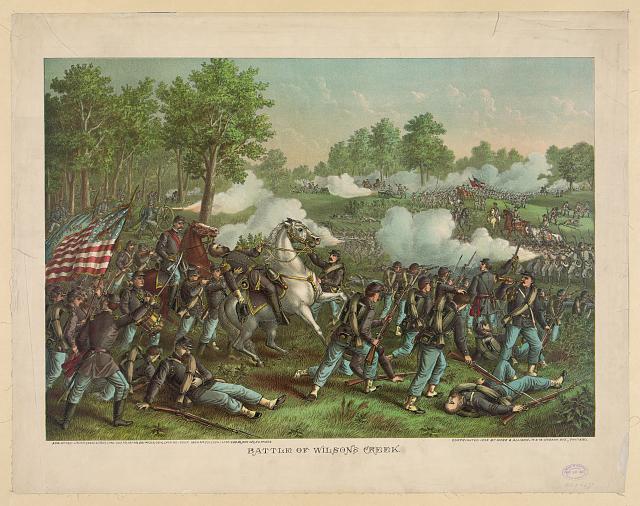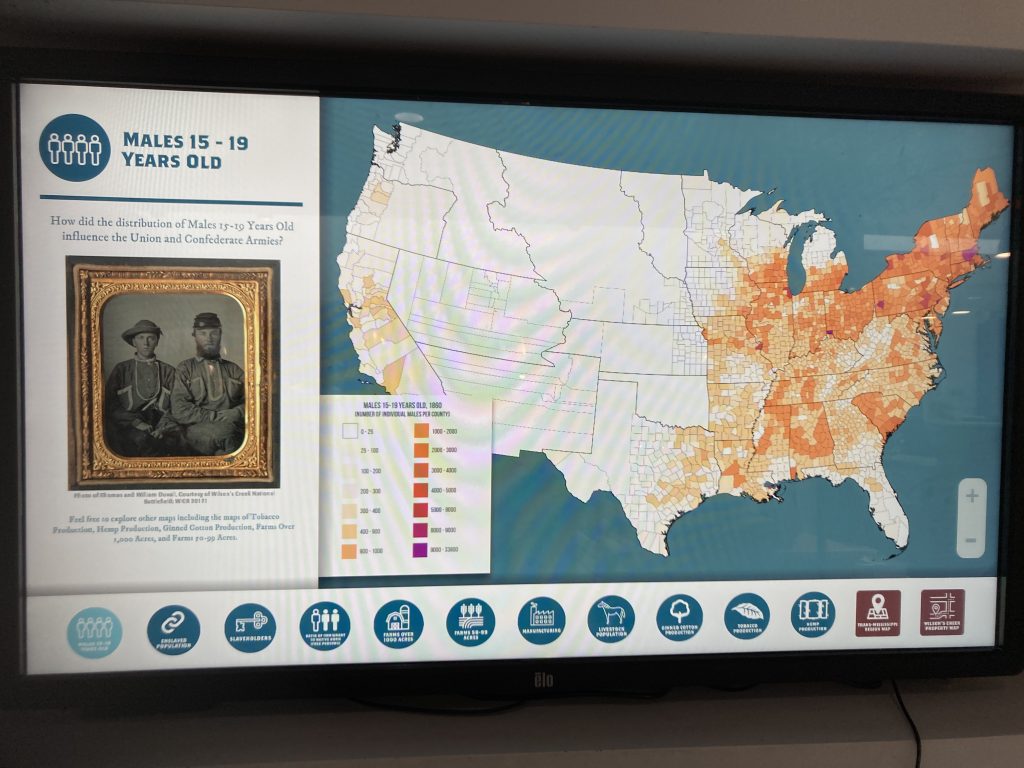History on Display: Wilson’s Creek National Battlefield

I recently took a short, (relatively) spontaneous trip home to the Missouri Ozarks. While I was there, my parents and I visited the nearby Wilson’s Creek National Battlefield, site of the first major Civil War battle fought west of the Mississippi on August 10, 1861.*
Wilson’s Creek became part of the National Park System in 1961, on the hundredth anniversary of the battle and a month after my third birthday. You could say that the park and I grew up alongside each other. It certainly was part of my education as a little history nerd.
Every time I’ve returned to the part as an adult, the exhibits have been more sophisticated and more nuanced. (I’d like to think the same could be said about me.) This visit did not disappoint.
The main change to the exhibit was a new emphasis on slavery in southwest Missouri in the years before the Civil War (some of which was new to me**), the participation of Black and Native American soldiers in the war, and the role Missouri played in the events leading up to the war. Here are some of the things that caught my attention on this visit:
- An excellent video showing how nineteen century armies maneuvered field artillery, with a digression into the number of horses used and killed in the war. (I was reminded of our visit to a museum dedicated to the engagement known as the Falaise Pocket in Normandy in World War II where we were told that it was two years before people could plant crops agains because the ground water was so polluted with the corpses of men and horses. I’ve said it before, and I’ll say it again: war is ugly.)
- An important component of the soldiers who fought for the Union at Wilson’s Creek were Germans from Saint Louis who had immigrated to the United States after the revolutions that swept Europe in 1848. The ’48ers had come here in search of freedom and were violently opposed to slavery. I had learned about this on my last visit to the battlefield, but it hit me harder this time, perhaps because I’ve spent the last few years deep in Nazis and American Nazi-supporters.
- With a few colorful exceptions, like the various Zouve units, we think of the armies dressed in uniforms that were, well uniform: blue for the Unions and gray for the Confederacy. In fact, many men fought at Wilson’s Creek in the same clothes they wore as civilians, making it hard to tell friend from foe on the battlefield. Even more confusing, at least one existing Union unit had gray uniforms.
- A interactive map that displayed demographic and economic data about the United States in 1861 down to the county level. I am a sucker for historical maps—after all, history occurs in both time and space. This one was absolutely fascinating. Some of the topics were expected: where cotton was grown for instance. Others were surprising: the distribution of what the map maker calls the “equine population”. (This did make me wonder how they got the information. ) I could have spent a lot more time with that map, and may on future visits.
In short, a worthwhile stop if you are in the area. I love the fact that the National Park Service is beginning to address the parts of history that most of us weren’t taught in school. Plus, maps.
*For those of you who don’t carry a timeline of the American Civil War in your heads: The war began with the fall of Fort Sumter on April 12, 1861. The first full-scale battle of the war, variously known as the First Battle of Bull Run or the First Battle of Manassas—depending on whether you are reporting events from the Union or Confederate perspective—occurred on July 21, 1861. In other words, the Battle of Wilson’s Creek was early in the war. If you want details about the battle itself, I recommend you check out the park website. As always, the National Park Service does an excellent job of telling the story.
**I was surprised to learn that the vast majority of slaves were in the area surrounding St. Louis and moving south. This upended many of my assumptions.






I would like to know about American Nazi supporters
Here’s a good article on the subject: https://www.nationalww2museum.org/war/articles/american-nazism-and-madison-square-garden
And here’s a blog post I wrote about a woman who spied on them: https://www.historyinthemargins.com/2023/08/08/florence-mendheim-librarian-against-the-nazis/